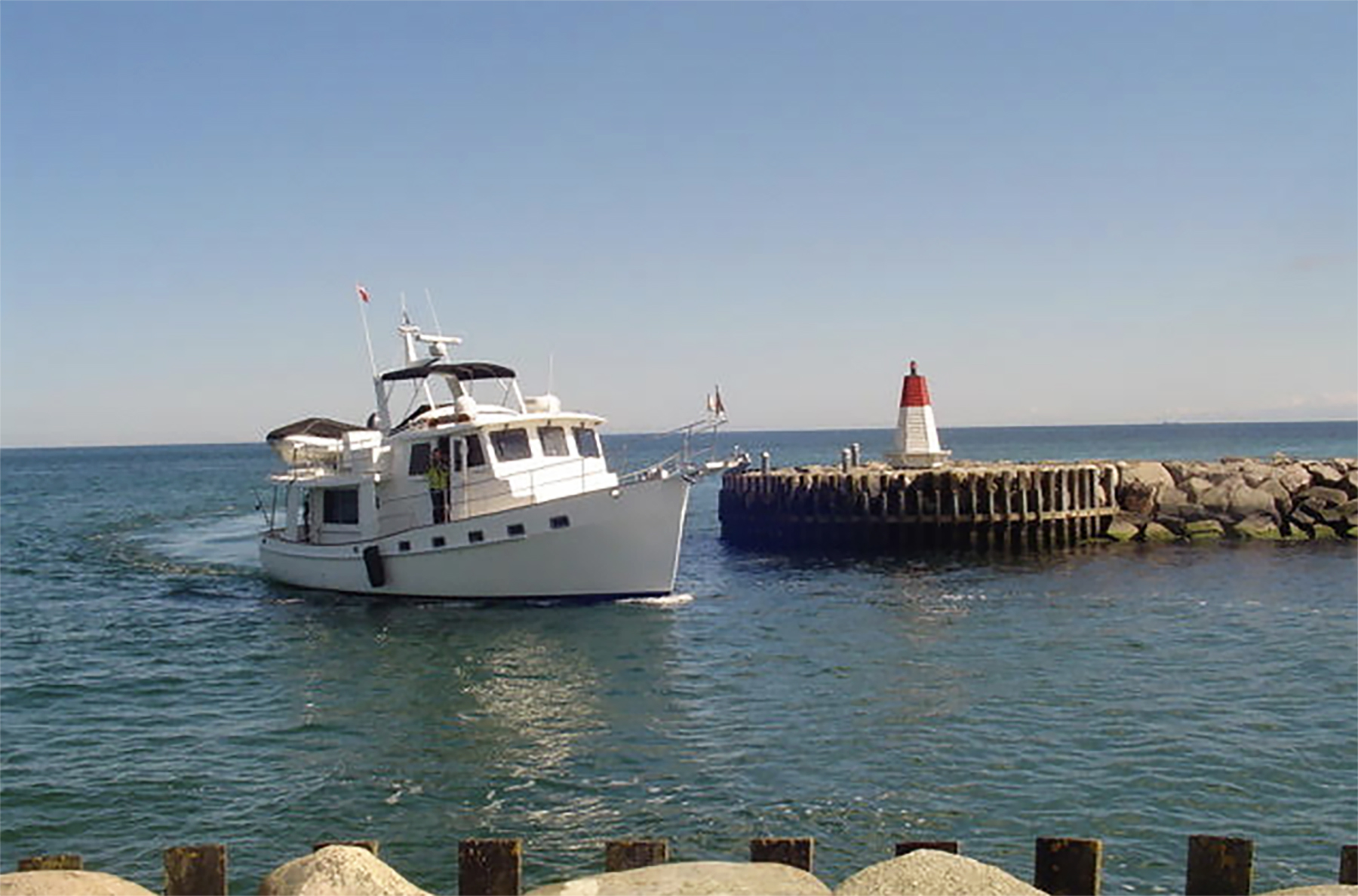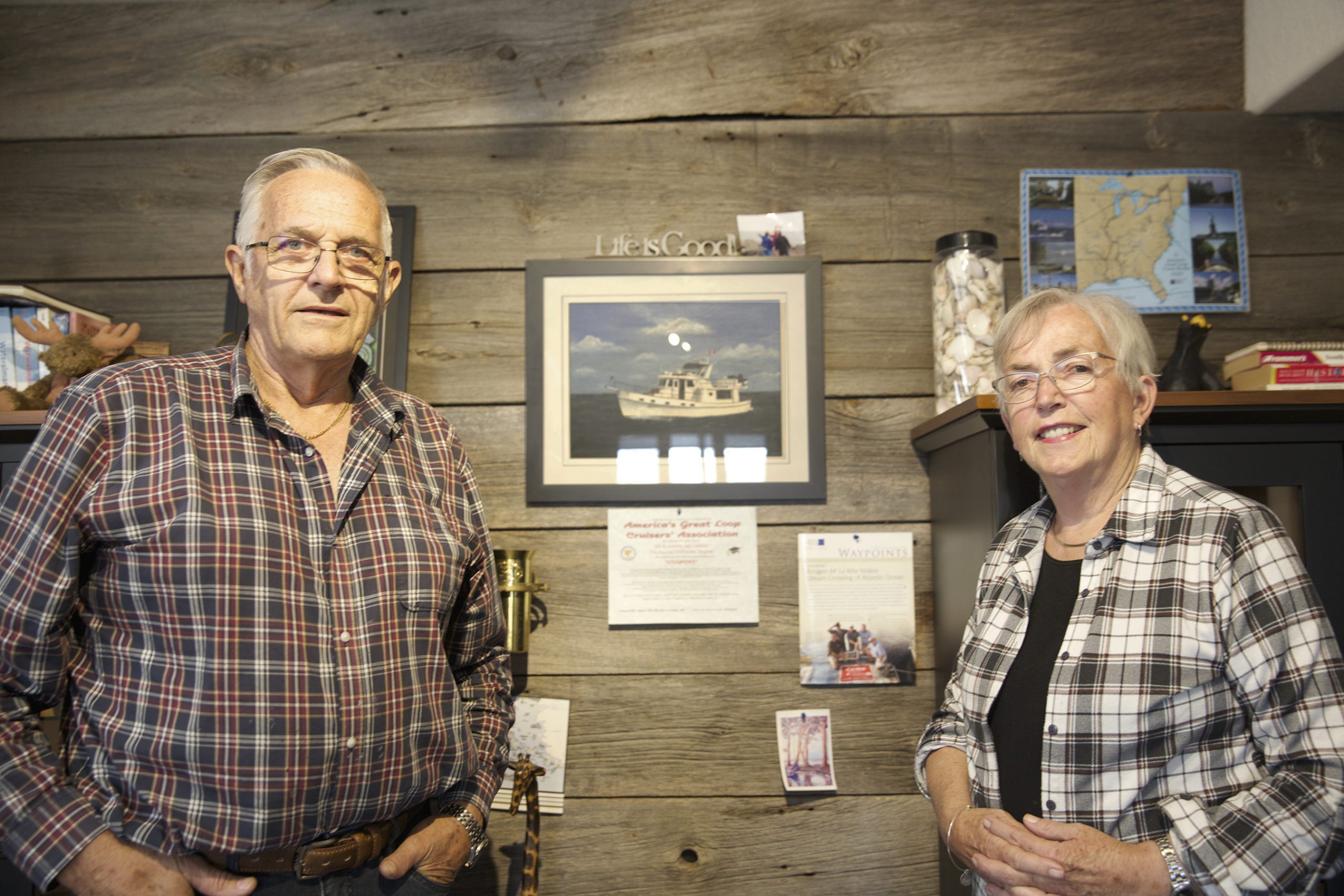DRAYTON – Bill Vanlenthe has always had a passion for boating.
When he was 15 and living in Holland, he made a small wooden paddle boat with friends. It was the beginning of something he could not have imagined at the time.
In 1965, he immigrated to Canada and eventually started his business, Bill’s Stabling, which manufactured livestock housing equipment. The company eventually became BSM manufacturing, which he sold off between 1999 and 2001.
“When I immigrated here, I bought a little 15-foot plywood boat with a 25-horsepower motor,” Vanlenthe said.
“We did some waterskiing with it and then I upgraded to an 18-foot cedar strip boat with a 35-horse motor,” he added.
“My friends and I did a lot of cruising on the lakes around here – Belwood Lake, Conestogo Lake – and then I got married and never thought about boating again, until about the mid 1980s.”
Vanlenthe, now 75, described having what boat owners sometimes refer to as “two-foot-itus” – a condition that begins with the initial purchase of a boat followed by an annual urge to upgrade to a boat that’s two feet longer.
By the time he retired, he’d made his way up to a 53-foot Carver.
He never lost his love for boating, and in 2007 Vanlenthe and his wife Joanne decided to take a trip around the Great Loop, a system of waterways that encompasses eastern United States and part of Canada.
While returning home from Florida, as he made his way through the Intracoastal Waterway, Vanlenthe came across a 44-foot Kadey-Krogen and was inspired to trade in the Carver for it.
“The Carver was a nice boat, but it would never have made it halfway across the Atlantic. It was a sexy boat, but Le Rêve was a ship.”
It was during this trip that Vanlenthe became interested in crossing the Atlantic.
Originally, he’d wanted to purchase a boat in Holland and bring it back across the ocean, but given differences in manufacturing, it would have been difficult to sell in the North American market.
The name Le Rêve (the dream) was chosen after Vanlenthe heard the story about the Huguenots arriving in Holland to avoid persecution in the North of France. Their dream had been one of freedom.
With preparations complete, supplies laid in, and the course mapped out, the crew of five men assembled and the voyage began.
They set off for the distant shores of Europe at around 8am on June 6, 2008.
The trip would take approximately 26 days, travelling 3,885 miles at a speed of about 5.7 knots, or 10.5km/h.
Le Rêve put out to sea from Atlantic Highlands, NJ on its way to Ijmuiden, Holland.
The voyage was done in three legs, heading first to Horta on the island of Faial in the Azores. On the second leg they would continue to Plymouth, England and finally to Ijmuiden.
The trip to Horta took a few days longer than expected. Typically, the route across the Atlantic (south of 40 degrees lat.) is calm with clear skies.
Le Rêve and its crew saw only a few such days. Most of the trip was rainy, foggy, and windy. Vanlenthe had anticipated seas with substantial waves, but nothing like what they experienced.
“People would ask ‘Oh, did you come across any storms?’, and I’d tell them ‘Only one – it started the day we left and lasted for the whole trip.’”
Vanlenthe said some of the crew had 100-ton commercial boating licenses, but the sea was sometimes so rough they were scared stiff. They encountered waves at least 17-feet high, that would break against the side of the boat.

Calm waters – Le Rêve rounds the breakwater as it heads into port. Photo by Riek Kok
“In the middle of the Atlantic there is no light pollution, and normally you can see for miles,” he said.
“For most of the crossing we couldn’t see our hand in front of our eyes. We had thunder and lightning, and it was constantly gray and miserable.”
There was always someone on the crew keeping watch, 24 hours a day, with a schedule drawn up of eight shifts. Surprisingly, not all boats crossing the ocean keep a continuous watch.
“Some boats, especially sailing vessels who are crossing single handed, or at best with two crew on board do not always value watch-keeping.”
The first few nights the crew hardly slept. It was so rough in the main cabin that Vanlenthe swore there were times there was a space between him and the bed.
Even after getting used to the rough seas, he woke up one morning to find the ship miles off course.
“I said, ‘what the heck are we doing here?’” The crew had been following the waves, as it was easier on the movement of the boat.
“If they’d kept following the seas, we would have ended up in Africa.”
Following that, they were constantly monitoring the distance they’d travelled, where they were positioned, and how much fuel remained.
“One thing that happens more than you realize, is when it gets stormy, and the seas are really rough, big cargo ships will pick containers and dump them overboard to lighten the load,” he said.
“A lot of these containers might have electronics or Styrofoam and will float just below or at the water level. Eventually they sink and disappear, but they’re hard to see in the dark and you don’t want to run into them.”
Le Rêve traveled farther south than planned to avoid the worst of the weather.
“I was most worried about electronic failure. Crossing the Atlantic, there’s really nothing to it, with today’s navigational equipment. But if that failed, I couldn’t go by the stars,” he said.
One relatively calm morning, Vanlenthe was on watch and saw something a few kilometers in the distance.
They altered course slightly and found that it was a sailboat floating upright, but badly beaten up by a storm.
The mast had snapped, the cockpit door was open, and rigging was hanging overboard as it bobbed up and down in an otherwise empty sea.
“We honked and hollered, but I didn’t want to get too close for fear of stuff getting tangled in the [propeller], which is a major no-no.”
After receiving no response to their calls, one of the crew decided he was going to jump in and swim over to the unmanned vessel.
“I said, ‘no you’re not,’” Vanlenthe recalled – “don’t endanger your life like that.”
They gave the sailboat a wide berth and using their satellite phone, called the United States Coast Guard.
After some time, they were told the crew of the boat had already been rescued and that they could carry on.
“It might have been an hour and a half or two hours later that everybody on board was silent. We all realized then the possible danger that we could be facing. That was about the scariest moment.”
When they arrived in the Azores, locals told them they could have pulled the boat in and it would have been theirs.
Salvage laws are more complex than that, but they would at least have been entitled to a generous reward.
“We could have, but that would have meant more fuel, and I didn’t need another boat, so it was never even an option,” Vanlenthe said.
Le Rêve was equipped with an automatic identification system (AIS), which allowed the crew to see other boats on the water and let them transmit their location.
“We did see some traffic, but there were days that we didn’t see anything.
“The screen would show us any ship within a range of approximately 15 nautical miles, as well as all pertinent information about the ship such as course, speed, destination, time to approach, and the name of the ship,” Vanlenthe explained.
Traffic on the Atlantic was light to non-existent some days, but that changed as they got closer to the English Channel, known for being a bottleneck of commercial ships heading in and out of Northern Europe.
“In these areas we’d have to keep very diligent watch and make changes to our course at the appropriate time in order to avoid a collision.”
Vanlenthe recalled a time Le Rêve was clearly on a collision course with a cargo ship.
“He was on my port side and according to the rules of the sea, had to give way to me.
“However, common sense in the boating world says that the bigger you are, the more right of way you have. You don’t argue right of way when the one approaching you is close to 1,000 feet.”
There wasn’t time to turn to port due to other traffic.
They called on the radio to make sure they were aware of Le Rêve’s position and to see if they’d planned to cross in front or behind.
“He came back and said that he would alter course to starboard and pass me on the stern. It was quite interesting to see a 945-foot ship alter course and suddenly cross my path on the stern by less than a quarter of a mile.”
After more than 620 hours at sea, Le Rêve and the crew made it safely to port in Holland, where Vanlenthe was reunited with his wife Joanne to spend time sightseeing and touring the canals and waterways.
His advice to anyone planning to cross the Atlantic is simple: “Make sure you have a seaworthy boat.”
In 2016, the boat was shipped to the United States and dropped in the waters of the Delaware River, where Bill and Joanne said their final goodbyes to Le Rêve.
“Today Le Rêve is down in the Southern U.S. as far as I know,” he said.
“We’ve turned that page, but it’s nice to know it’s still out there floating around somewhere.”
* * *
Are you acquainted with a remarkable senior residing in Wellington County? If so, email czimmerman@wellingtonadvertiser.com to share their story.




